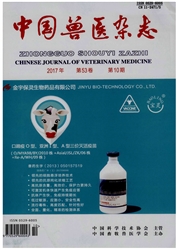

 中文摘要:
中文摘要:
目的-研究一氧化氮(N0)、一氧化氮合酶(NOs)在替来他明及小型猪复方麻醉剂(XFM)全麻分子机理中可能的作用。方法-SD大鼠96只,先随机均分替来他明组和XFM组,每组又随机均分为对照组、麻醉组、恢复Ⅰ组和恢复Ⅱ组。用比色法分别测定各脑区的NO产量和NOS活性。结果-ip替来他明30mg/kg后,在麻醉组大脑皮层、海马及丘脑的NOS活性受到明显抑制,且使NO产量显著减少(与对照组相比,P〈0.05)。在恢复Ⅰ组上述脑区NO产量、NOS活性呈现不同程度恢复,到恢复Ⅱ组时明显恢复(与对照组相比,P〉0.05)。在替来他明麻醉全过程中小脑和脑于NOS活性无明显变化。大鼠ipXFM0.5mL/100g后,在麻醉组大脑皮层、小脑和丘脑的NOS活性明显受到抑制,且使NO产量显著减少(与对照组相比,P〈0.01)。而在恢复Ⅰ组、Ⅱ组上述3个脑区的NO产量、NOS活性明显恢复(与对照组相比,P〉0.05)。在XFM麻醉全过程中海马和脑干NOS活性无明显变化。结论-NO、NOS参与了替来他明及XFM全麻作用产生的分子学机理的调控。替来他明全麻作用可能与抑制大脑皮层、海马和丘脑等脑区的NO产量、NOS活性相关。而XFM全麻作用可能与抑制大脑皮层、小脑和丘脑等脑区的N0产量、NOS活性相关。
 英文摘要:
英文摘要:
To investigate the effects of tiletamine on NO and NOS and the molecular mechanisms of general anaesthesia mediated by XFM. 96 SD rats were divided randomly into tiletamine and XFM groups. And each group of animals were divided randomly into three treatment and one control groups, maintenance of anesthesia group, recovery from anesthesia Ⅰ group and recovery from anesthesia Ⅱ group. The activities of NOS and NO production were measured by spectrophotometric analysis. After injected intraperiton eally with tiletamine 30 mg/kg , animals were examined for the activities of NOS in the cerebral cortex. It was found that the hippocampus and the thalamus in the anesthesia group were obviously inhibited, and the NO production in above-mentioned regions was obviously decreased as compared with control group(P〈0.05). The activities of NOS and the NO production in the cerebral cortex, the hippocampus, and the thalamus were affected by tiletamine in the recovery I group . Though the degree was not consistent, the tendency presented recovery in general. In the recovery Ⅱ group, the activity of NOS and the NO production in the cerebral cortex, the hippocampus, and the thalamus obviously revived as compared with control group(P〈0.05). The activities of NOS and the NO production in the brain stem and the cerebellum were not obviously changed in the process of general anesthesia of tiletamine. After the animals were injected intraperitoneally with XFM 0. 5 mL/100g in intraperitoneally, the activities of NOS in the cerebral cortex, the hippocampus and the thalamus in the anesthesia group was obviously inhibited, the NO productionin above-mentioned regions was obviously decreased as compared with control group(P〈0.01). The activity of NOS and the NO production in above-mentioned regions in the recovery I group and recovery H group were obviously revived as compared with control group(P〉0.05). The activity of NOS in the hippocam- pus and brain stem were not obviously changed in the process of general an
 同期刊论文项目
同期刊论文项目
 同项目期刊论文
同项目期刊论文
 期刊信息
期刊信息
